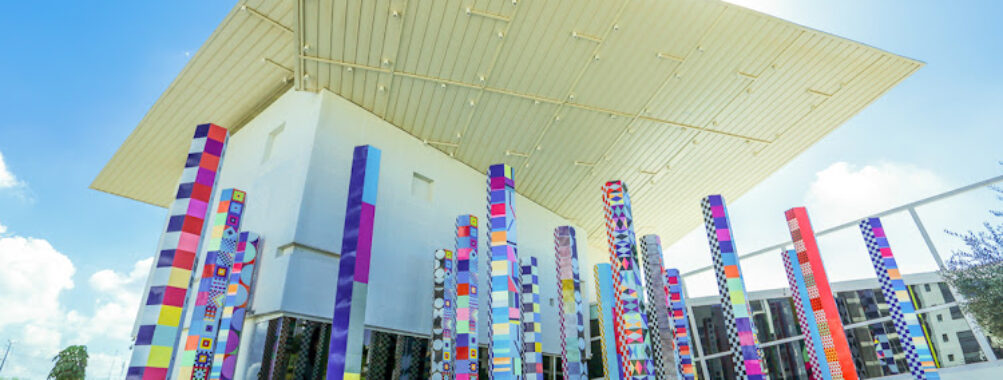
Yaacov Agam Museum of Art
“`html
Table of Contents
Description
The Yaacov Agam Museum of Art in Rishon LeTsiyon is a place that feels alive, constantly shifting just like the artwork it houses. Dedicated to the pioneering Israeli artist Yaacov Agam, widely regarded as the father of Kinetic and Optical art, the museum isn’t your typical “walk quietly and stare at paintings” type of place. Instead, it’s playful, interactive, and designed to make you move around, tilt your head, and even question what you’re seeing. Agam’s art thrives on motion and perspective, so what you see often changes depending on where you’re standing. It’s not a passive experience—it’s the kind of museum where you feel like part of the artwork itself.
That said, not every visitor comes away with the same impression. Some people are blown away by the colors, the illusions, and the sheer creativity. Others, well, they find it a bit overwhelming or even repetitive. And honestly, that’s part of the charm. Art that sparks debate is usually art worth seeing. Personally, I walked away with a mix of awe and curiosity, and a strong urge to go home and rearrange my furniture in some wild geometric patterns. If you’re someone who loves modern art that challenges the way you see the world, this museum is going to be right up your alley.
The museum itself is modern and well-equipped, with thoughtful amenities like a café, Wi-Fi, accessible facilities, and both free and paid parking. Families will appreciate that it’s kid-friendly, and there are often live performances or special programs that make the visit even more dynamic. Just be aware that the museum occasionally closes for exhibition changes, so double-check the schedule before planning your trip. When it’s open, though, it’s a memorable stop that adds a completely different flavor to a day of exploring Israel.
Key Features
- Dedicated entirely to the works of Yaacov Agam, a pioneer of Kinetic and Optical art
- Interactive and dynamic displays that change depending on your perspective
- Live performances and special programs throughout the year
- Family-friendly environment with exhibits that appeal to children and adults alike
- Wheelchair accessible entrances, restrooms, and parking
- Onsite amenities including a restaurant, restrooms, and free Wi-Fi
- Both free and paid parking options available
- Advance ticket booking recommended, especially during holidays and school breaks
Best Time to Visit
If you want to avoid the biggest crowds, weekdays are usually calmer than weekends. School holidays tend to bring in more families, which can be lively and fun if you enjoy that energy, but less so if you prefer a quieter atmosphere. The museum sometimes closes temporarily for exhibition changes—like in January 2025—so it’s smart to check ahead. Personally, I think the best time is late afternoon, when the light outside softens, and you can step out after your visit for a relaxed coffee or early dinner nearby. It makes the whole experience feel less rushed. And if you’re traveling with kids, mornings are better since they’ll have more energy to enjoy the interactive displays.
How to Get There
The museum is located in Rishon LeTsiyon, within the government complex area, which makes it fairly easy to reach whether you’re coming by car or public transport. Driving is straightforward, and the availability of both free and paid parking takes away a lot of the usual stress. If you’re not driving, buses and trains connect Rishon LeTsiyon with Tel Aviv and other cities, though you’ll probably need a short taxi ride from the station to the museum itself. Personally, I found driving the easiest option—it gave me the freedom to explore the area afterward without worrying about bus timetables. But if you’re not comfortable driving in Israel, public transport plus a quick cab is still a solid choice.
Tips for Visiting
First and foremost, give yourself enough time. This isn’t a museum you just breeze through in 30 minutes. The pieces are meant to be seen from different angles, and if you rush, you’ll miss the magic. I’d recommend at least two hours if you want to really take it in. Also, bring your curiosity—this is art that rewards a playful mindset. Don’t be afraid to lean in, step back, or walk around a piece several times. That’s the whole point.
If you’re traveling with kids, prepare for lots of “wow” moments. The colors and illusions are naturally engaging, and it’s one of those rare museums where children don’t feel like they’re being dragged along. For adults, I’d suggest reading a little about Agam’s philosophy before going. Understanding how he thought about time, movement, and spirituality adds a deeper layer to what you see. And, a practical note: check the museum’s schedule online before you make the trip, since opening hours can change during holidays or exhibition swaps.
Lastly, don’t skip the café. After wandering through all that visual stimulation, sitting down with a coffee feels like hitting the pause button. It gives you a chance to process what you’ve seen—and maybe debate with your travel companions whether that one piece looked better from the left side or the right. For me, that post-museum conversation was almost as memorable as the art itself.
“`
Location
Places to Stay Near Yaacov Agam Museum of Art
Find and Book a Tour
Explore More Travel Guides
No reviews found! Be the first to review!